Feelin' blue
It's been awhile since I posted some Photoshop hints, so I thought while I was finishing up the Gingerbread Man manual (Gingerbread Man-ual?) it was as good of a time as any.
The more I draw, the more I keep exploring different ways to draw. In the last year or so, I've really gotten back into drawing on paper, as opposed to starting off in the computer. Using paper and pencil is just infinitely more manipulatable than even the best computer drawings programs. I still use computers for what they do best - taking that pencil drawing, and then turning it into finished art. But for the purposes of actually drawing - getting the idea down and refining it - I'm back to pencil and paper. Even though I've been drawing on paper again longer than the last year, the difference now is, I'm making far more corrections on paper, to refine the drawing before it ever gets in the computer, whereas before, I'd leave a lot more of that to fixing in the computer.
The reason I'm doing this, even though it's pretty time-consuming, is that it's a lot more satisfying, and I think I end up with a lot better results. If I fix too much of a drawing in the computer, it tends to look "fixed". A good (or bad) example of this is the original RPS label, which was done entirely in the computer, and manipulated and tweaked to the point where it completely lost all of its life. One of the projects I've been revisiting in my spare time is creating entirely new RPS artwork, and it's drawn by hand, on paper, and it looks 100 times better. I'm still tweaking it though, but I'm doing it "the hard way", and it works much, much better now. Whether I'll ever finish it or not is another question... but that's okay, since whether or not the game ever gets finished is a big question too. ![]()
One habit I picked up while studying animation, is drawing in blue pencil. In the studios, animators would draw in blue pencil, and a clean-up artist would come in behind them, and do the final line in graphite (for all intents and purposes - black). When the drawing was photocopied onto a cel (this was after traditional hand-inking went by the wayside), the blue would disappear, and you'd end up with a clean line.
I got away from using blue pencil for awhile (when I was using the computer to draw), and forgot about how good of a tool it really was. What it allows me to do, is have a much broader range of values while I'm working on the drawings. Using a light blue pencil, I can make a really loose sketch, then begin to tighten it up with dark blue, erasing and re-drawing, but still always being able to see just a hint of what was there before, so I never really lose any part of the drawing - it just gets pushed a little further back into the page. Then when I've got the drawing down to where I want it, I do a clean-up pass with graphite. All the while, I can go back in and erase layers away, just leaving only what I want to continue to work with. Erasers in programs like Photoshop and Painter can't do that. They just erase everything equally. Also, I can get far more control over my line using a pencil, than I can with even a really good graphics tablet. I can turn the pencil slightly to reveal a sharp edge for fine detail, or use a broader stroke where a continuous, sweeping line is needed.
For the colored pencils, I use Col-Erase pencils. You need something that can be erased, and most colored pencils can't.
For graphite, I'm mostly using a vintage Gramercy lead holder that my dad gave me, with 2B lead.
In the end, I end up with something that looks like kind of a mess:

But I can start to clean it up in Photoshop, by adjusting the Saturation and Lightness of Blue:
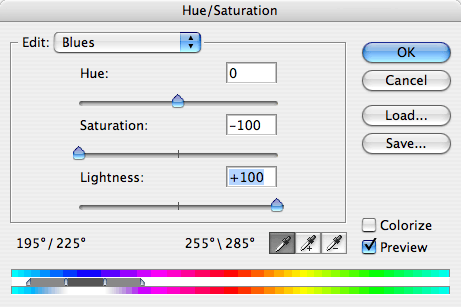
So now I've got:

Doing the same to Cyan:
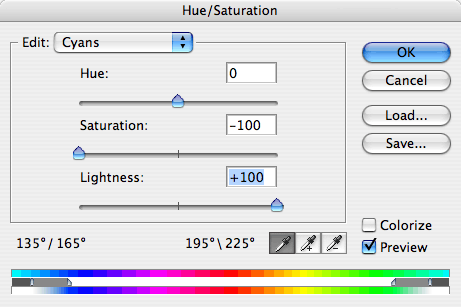
Takes care of the light blue lines:
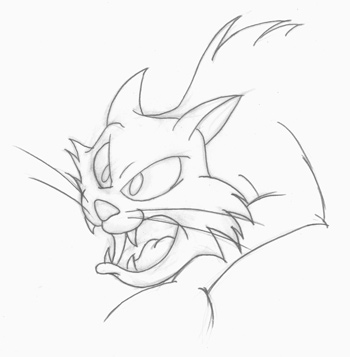
Then, I'll adjust the Master Saturation to get rid of any other color:
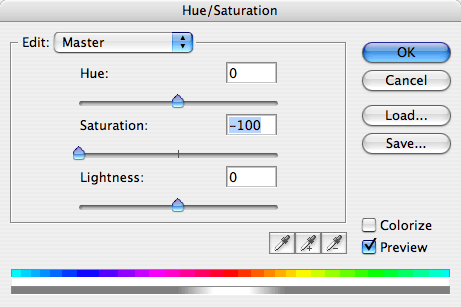
And tweak the Levels, to remove smudges, and darken the lines a bit:
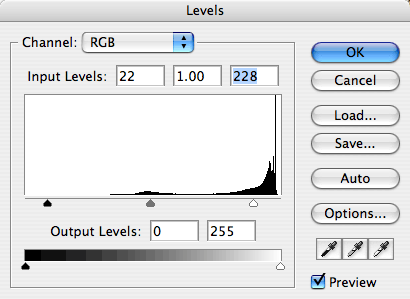
And then I've got my final, cleaned-up pencil art:
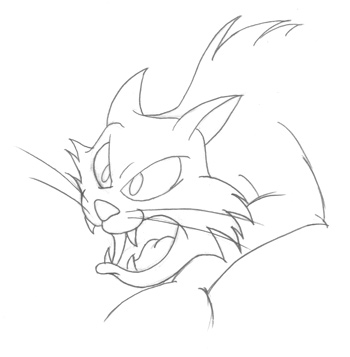
All of this, is to get something that I can take into FreeHand (or Illustrator), and trace as vector art. I don't use auto-trace - I do it all by hand.:
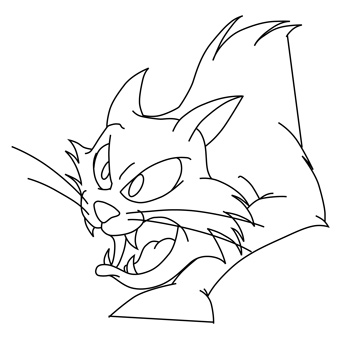
The open areas have been closed off with straight lines to make coloring easier. Those areas will be cropped off in the final composition. It's also at this point where I can go in and make corrections, and clean things up that I missed on paper.
That gives me my final, "inked" artwork, that I can then begin coloring:
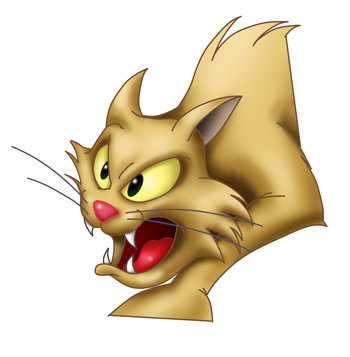
Which is something I already covered in earlier tutorials. ![]()


2 Comments
Recommended Comments